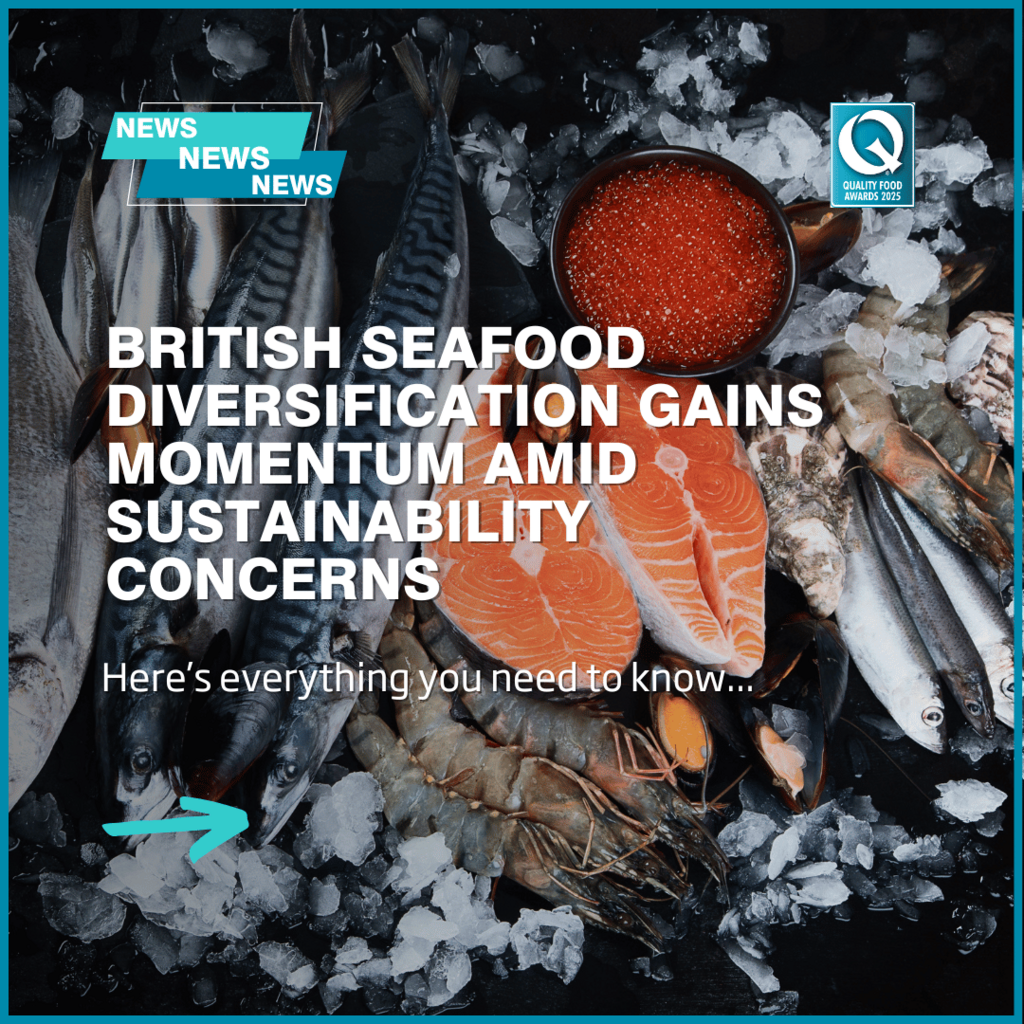
British seafood diversification gains momentum amid sustainability concerns
A shift away from traditional fish like cod and haddock towards lesser-known and sustainable varieties is transforming the UK’s seafood landscape, driven by chefs, retailers, and consumers committed to ecological and culinary innovation.
For decades, the British diet has been dominated by a narrow selection of seafood, primarily cod, haddock, salmon, tuna, and prawns. Despite ongoing campaigns against overfishing, stringent quotas, and the push for Marine Stewardship Council (MSC) certifications, these species continue to overshadow the incredible variety of fish available in UK waters. This limited palate has long been a point of concern among sustainability advocates and chefs alike, as it places immense pressure on a handful of fish populations, threatening both ecological balance and fishing communities.
Jack Stein, chef-director of Rick Stein Restaurants, highlights how the British public has historically favoured just a few types of fish, often overlooking the vast range of species that local fishermen harvest. Over the years, chefs across the UK have begun to challenge these ingrained preferences by incorporating underappreciated species, once dismissed as bycatch, into their menus. At Timberyard in Edinburgh, for example, Atlantic wolffish and deep-sea perch are gaining prominence. Meanwhile, London's Behind restaurant champions grey mullet and kippers, and in Cornwall, Nathan Outlaw’s Fish Kitchen offers gurnard, megrim, and ling, fish that typically dwell in deeper waters.
This shift reflects a broader, ongoing movement initiated by pioneers like Rick Stein and Keith Lloyd in the 1980s, and carried forward by contemporary chefs such as Jamie Oliver and Hugh Fearnley-Whittingstall, who have encouraged a more imaginative seafood repertoire. Stein stresses the importance of building a stronger domestic market for these 'lesser' species, suggesting that fish like pouting, whiting, and dab could follow monkfish's path from being undervalued to becoming prized and high-priced commodities. Such diversification can play a vital role in sustaining both marine ecosystems and the fishing communities that depend on them, a point Stein underlines by emphasising the need to tell fishermen's stories through various media to foster public appreciation.
Chef Nathan Outlaw has long recognised the challenges of overfishing certain key species and has been an advocate for the use of lesser-known fish throughout his career. He is preparing a new recipe book that excludes cod completely, spotlighting these alternative species to encourage a broader culinary acceptance. Outlaw acknowledges that while fine dining can lead the way, the real challenge lies in making these fish accessible to the wider public. With traditional fishmongers and fish counters dwindling, online suppliers such as Rockfish and The Cornish Fishmonger have become crucial in bridging the gap by providing both high-quality seafood and educational resources to home cooks. This approach helps demystify unfamiliar fish, making it easier for consumers to venture beyond their usual choices.
Rockfish CEO Mitch Tonks elaborates on this consumer education role, noting that although local species like coley, ling, and trout are sustainable and versatile options with low environmental impact, many home cooks lack the confidence or know-how to prepare them. Rockfish addresses this by offering recipe ideas, cooking tips, and video tutorials, aiming to break down the barriers that prevent people from trying these lesser-known fish. This effort complements the work done in restaurants, creating a more supportive environment that encourages adventurous and sustainable seafood consumption.
Retail data points to a growing appetite for such diversity. Waitrose, for instance, has reported a 20 per cent rise in ray wing sales over the past year and a 9 per cent increase in No.1 Craster Kippers in recent months, with corresponding spikes in online recipe searches for these fish. This trend aligns with a broader consumer shift towards adventurous cooking and reducing food waste, as shoppers seek more unique and forgotten fish varieties and receive guidance from knowledgeable store staff.
Despite this positive momentum, there remains a cautionary note about the potential for newly popular species to become victims of their own success. The risk of overfishing as demand surges is real, and both chefs and suppliers advocate for measured approaches to market expansion. Bart Stratfold of Timberyard highlights the dangers of hype, warning that species could be overexploited if enthusiasm outstrips sustainable harvesting limits. Strategies such as seasonal fishing restrictions and slot limits, which regulate the size of fish caught, are proposed as ways to maintain healthy stocks and quality products over the long term. Andy Beynon at Behind suggests dynamic pricing based on stock levels to discourage overfishing by making overfished species less economically attractive.
This emerging diversification effort is also shaped by broader changes in British seafood consumption. The rise of a new generation of ‘seafoodies,’ inspired by TV chefs like Rick Stein, has revitalised the fishing industry by shifting focus towards shellfish and alternative fish species. However, this shift has raised concerns about overfishing of certain shellfish, prompting new protective regulations. It underscores the need for a delicate balance between promoting variety and safeguarding marine life.
Rick Stein’s contribution to broadening the UK’s seafood scene cannot be overstated; starting in the 1970s, he brought a new appreciation for seafood beyond the meagre offerings of the time, popularising a wider range of fish and dishes, including lobster thermidor. His recent initiatives continue this legacy, encouraging consumers and the industry alike to embrace unsung seafood species as a means of supporting sustainable fishing practices.
Ultimately, the future of British seafood lies in a more diverse, sustainable approach—one that values lesser-known species, supports fishing communities, and educates consumers. As people grow more confident in cooking fish at home and diversify their diets, there is potential not only to ease pressure on popular species but also to discover new flavours and culinary experiences. Achieving this requires ongoing collaboration between chefs, suppliers, retailers, and consumers, alongside vigilant management of fish stocks to ensure that today’s ‘fish of tomorrow’ do not become tomorrow’s overfished casualties.
